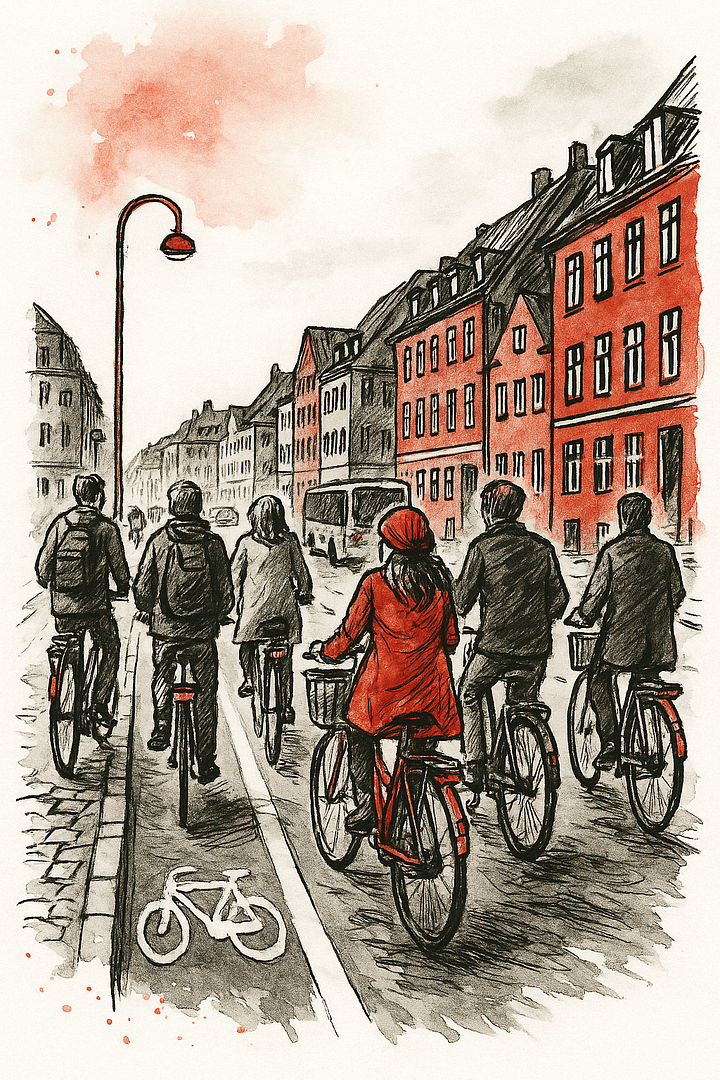Denmark’s EU Presidency in 2025
Introduction: Denmark Steps into the Spotlight
Every six months, a different EU member state holds the rotating presidency of the Council of the European Union—a key role that helps steer legislative priorities and negotiate on behalf of the bloc’s 27 countries. In the second half of 2025, that responsibility falls to Denmark, a country known more for its quiet diplomacy than political drama.
But don’t let its size fool you. Denmark’s EU Presidency in 2025 comes at a time when Europe faces intense debates on energy security, migration, climate change, and digital sovereignty. Denmark may be small in population, but it brings a strong voice to the table—one shaped by pragmatism, innovation, and a long-standing commitment to EU integration.
So, what can Europe expect from this Nordic chairmanship? Let’s take a look.
A Brief Look Back: Denmark’s Past Presidencies
This isn’t Denmark’s first time in charge. In fact, the country has held the EU presidency seven times since joining the European Economic Community in 1973. Most recently, Denmark led in 2012, where the focus was on stability, growth, and a digital single market.
Each presidency reflects the challenges of its time—and 2025 is no exception. What’s different this time is the scale of uncertainty. The war in Ukraine, inflationary pressures, and green transitions are colliding with rising populism and questions about enlargement.
Denmark, known for its consensus-driven politics and economic discipline, is aiming to bring a calm and solutions-focused tone to the Council.

What’s on the Agenda for Denmark’s EU Presidency 2025?
1. The Green Transition Takes Centre Stage
With a reputation as one of the most sustainable countries in Europe, Denmark is expected to push hard for ambitious climate goals. This includes accelerating the Green Deal, strengthening emissions reduction commitments, and expanding renewable energy—particularly wind power, where Denmark is already a global leader.
Denmark’s presidency will likely reinforce the EU’s Fit for 55 package, the plan to reduce net greenhouse gas emissions by at least 55% by 2030. There’s also likely to be pressure to introduce tighter sustainability measures on transport, agriculture, and housing.
However, these proposals won’t come without resistance. Countries more reliant on coal or less willing to impose environmental regulations may slow negotiations—highlighting the gap between ambition and feasibility.
2. A Digital Europe for the Future
Denmark also wants to cement the EU’s status as a digital powerhouse. In line with the Digital Services Act and Digital Markets Act, the presidency is expected to prioritise fair digital competition, data ethics, and cybersecurity cooperation.
With AI rapidly transforming economies, Denmark may also lead discussions on EU-wide ethical AI frameworks, especially after the groundwork laid by the AI Act in recent years.
The challenge? Keeping up with global tech giants and ensuring that rules remain innovation-friendly while protecting citizens’ rights.
3. Enlargement and EU Reform: A Tough Balancing Act
With Ukraine, Moldova, and Western Balkan countries expressing interest in EU membership, the topic of EU enlargement is impossible to avoid.

Denmark has historically taken a cautious stance on enlargement but recognises the importance of long-term stability in Europe. The 2025 presidency may help frame reforms needed to make the EU structurally and financially ready for new members.
It’s a delicate task: moving forward without alienating current member states or making promises that can’t be kept.
The Good, the Bad, and the Complicated
The Upside: Trust and Transparency
One of Denmark’s biggest strengths is credibility. It is often seen as a trusted broker—transparent, efficient, and with few political entanglements. That makes it well-positioned to mediate contentious negotiations and keep the EU train on the tracks.
Its presidency is also expected to be highly organised, drawing on the country’s tradition of consensus-building and policy clarity.
The Challenges: Small Country, Big Problems
But there are limitations. Denmark is a small state with a limited foreign service network compared to larger EU members. It also maintains several opt-outs, especially in areas like defense, which means its influence can be constrained in major policy debates.

Moreover, the EU landscape in 2025 is highly fragmented. With rising nationalism in some member states and looming elections in others, finding unity could prove tougher than ever.
What It Means for the Rest of Europe
Denmark’s presidency won’t single-handedly reshape the EU—but it can shape the tone, pace, and ambition of the Union’s agenda during its term.
If it successfully balances progress on green energy, tech regulation, and enlargement conversations, it may leave behind a legacy of pragmatism and forward-thinking policy. It could also inspire other small states to take more assertive roles in shaping EU policy.
But if progress stalls or the presidency gets bogged down in internal divisions, Denmark’s term might be remembered more for keeping the lights on than moving the Union forward.
Conclusion: Small State, Strategic Moment
Denmark’s EU Presidency in 2025 is not just a ceremonial role—it’s a test of leadership in a period of European transformation.
From managing climate goals to debating the EU’s future borders, Denmark finds itself at a critical crossroads. The stakes are high, the challenges complex, but Denmark brings to the role a blend of Nordic sensibility and EU commitment that could help steady the ship.
Only time will tell whether this presidency will be a turning point or a holding pattern. But one thing is clear: in 2025, Europe will be looking north for direction.
Sources:







